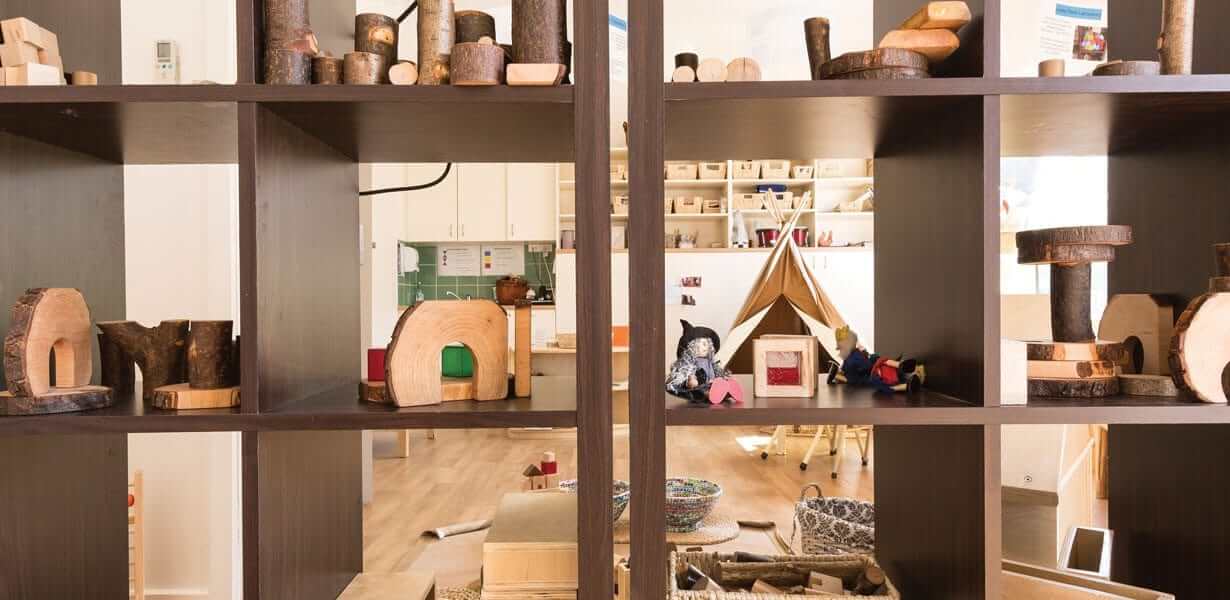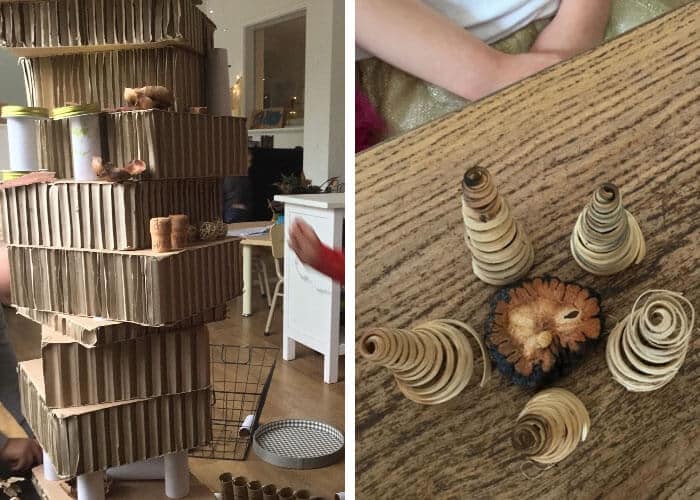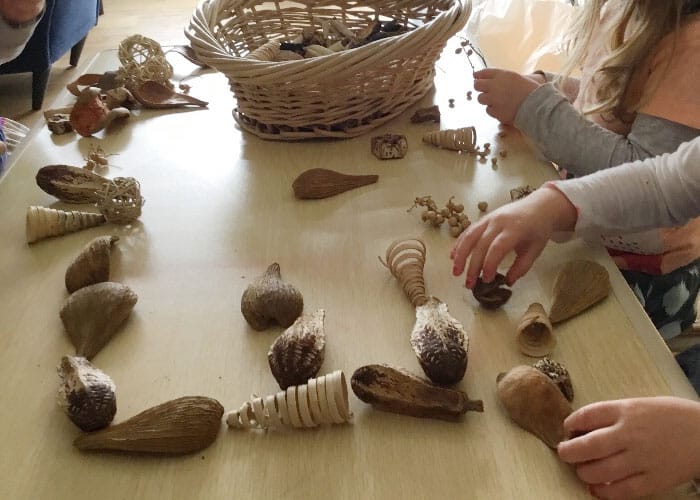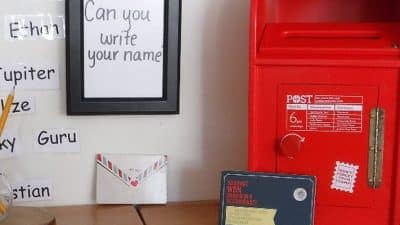Explaining Loose Parts Play

Loose parts are an important element in Guardian centres. But what are loose parts and what are the benefits of this kind of play for children? Blyth Street’s Centre Manager Simone Myskiw explains.
Loose parts play is a type of play that supports invention, divergent thinking, problem solving and offers a sense of wonder to children. They are materials that can be moved, carried, combined, redesigned, lined up, and taken apart and put back together in multiple ways. They are materials with no specific set of directions that can be used alone or combined with other materials.
“Children do not live – as many still believe – in a mythical and pre-intellectual dimension, but they are capable of constructing thoughts and reflections because knowledge is with them, right from birth, in the heart of life itself. Children, above all when together with other children, are inventors, “safecrackers”, and re-builders of theories and behaviours that elude any presumptuousness or predictability of methods. Children do not wait for our permission to think. Indeed, children are bursting with ideas that are always impatient to escape through language (and we say a hundred languages) to connect and communicate with the things of the world.”
Loris Malaguzzi
Our ideas about these types of resources that have had another life, and will have many hundreds more have evolved and been influenced in different ways by educators and theorists as varied as Maria Montessori, Lev Vygotsky, Vivian Paley and Loris Malaguzzi, and of course by the children who use them in a hundred different ways during play and exploration.
Each of these leaders and innovators has left their own influence: from child-sized furnishings, to the creation of social spaces for language development, the importance of a stage for storytelling and taught us how important it is for children to be given time, space and freedom to explore the unknown, reinvent, create and make meaning in the world wound them. Loose parts have a life, a language, their equal complexity and simplicity provide children with a way of communicating that lends itself to advanced problem solving, dramatic play, storytelling, fantasy, engineering, mathematics, and communication, just to name a few.

This type of play launches children into learning environments that builds a repertoire of how things come to be – how a sky scraper stays up, how a bridge can expand across lakes and rivers, how patterns and sequences are made, imagination bought to life, theories and meanings can be explained and worlds are re-imagined.
The children and educators at Blyth Street approach experiences with loose parts with enthusiasm and a sense of wonder. When we first introduced loose parts to our construction areas, in all age groups of children aged from nine months to five years, we noticed that a new type of play, language and learning was emerging. As the sense of wonder builds, and the possibilities of the materials in this space begins to open up, new worlds are entered into. Initially we set up the loose parts in a physical space that was large and open. The intent behind this was to encourage small group learning and space for the children to build and come back to their previous work. With the introduction of loose parts and the removal of the blocks – suddenly towers have texture, height, weight, density, complexity and attraction that regular blocks cannot offer.
We believe that children’s and adult’s behaviour is influenced by the organisation of resources, space, lighting, acoustics, furniture, equipment and texture. All of these elements “speak” to us and influence our thought processes and actions. Being open to the possible responses to the environment, and then observing and reflecting on these responses is a powerful educational tool. As educators, we have a responsibility to be open to the possibilities of different realities, to create environments as places of wonder and multiple learning where children undertake their own research.
Experimenting with loose parts, natural light and mirrors adds another layer to our experimenting and play. Using loose parts that have curves, holes, patterns, that are transparent, challenges the idea of a shadow, because the resources we are using, just like shadows, are now multifaceted – they change the environment. Rolls of cardboard reacts to touch; heavy pieces of leather and vinyl have weight and movement. A piece of coloured plastic caught in the sunlight suddenly becomes a portal in to a new world. By adding loose parts in to not only our construction areas, also in to literacy and storytelling, dramatic play, numeracy, mathematics and science we can see our classrooms becoming more complex.

Possibilities for children’s learning while playing with loose parts:
- Demonstrate how they learn as individuals and in groups
- Engage in problem solving and abstract thinking
- Establish social interactions as they begin to explore their community of peers in a shared space
- Experience wonder through experimentation and discovery of new worlds and the unknown
- Experience happiness and a sense of joy in new experiences
Possibilities for educators working with children and loose parts:
- Formulate theories about the relationships children develop with loose parts
- Engage in experiences and learning with children to test their theories.
- Enhance, re-direct, research & challenge – based on the theories the children form.
- Collaborate and interpret children’s learning
- Gain a deeper insight in to individual and group learning styles
Looking for the right Childcare Centre for your Family?
Submit your details and a member of our Concierge Team will be in touch to discuss what you need and how we can help you experience something more than childcare.
We'll be in touch soon.






